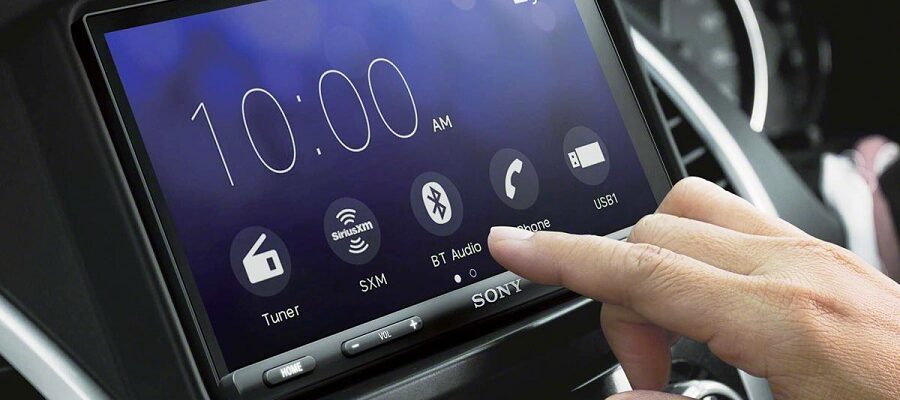Automobile car stereos and head units have come a long way since their inception. Gone are the days of basic AM/FM radios with limited functionality. Today, car audio systems offer a plethora of features and options to enhance your driving experience. In this blog, we will delve into the world of automobile car stereos and head units, exploring their evolution, key components, features, and factors to consider when upgrading your car’s audio system.
Evolution of Car Stereos and Head Units
The history of car audio systems dates back to the early 1930s when Motorola introduced the first commercially available car radio. These radios were relatively simple, offering only AM radio reception. Over the decades, car audio technology evolved significantly, incorporating innovations such as FM radio, cassette players, CD players, and, more recently, digital media and smartphone integration.
Key Components of Car Stereos and Head Units
- Head Unit: The head unit, often referred to as the car stereo, is the central control unit of the car’s audio system. It typically includes a display screen, control buttons or a touchscreen interface, and various input options. Modern head units are equipped with advanced features like Bluetooth connectivity, USB ports, and smartphone integration capabilities.
- Amplifier: Amplifiers are responsible for boosting the audio signal from the head unit to power the speakers. Some head units have built-in amplifiers, while others require external amplifiers for optimal sound quality, especially in high-end audio setups.
- Speakers: Car speakers come in various sizes and types, including coaxial (full-range) and component speakers. They are responsible for reproducing sound in the vehicle. High-quality speakers can significantly improve audio clarity and fidelity.
- Subwoofers: Subwoofers are dedicated speakers designed to reproduce low-frequency bass sounds. They add depth and impact to the audio experience and are often used in conjunction with amplifiers to enhance bass response.
- Equalizers and Processors: These components allow you to fine-tune the audio output to suit your preferences. Graphic equalizers, digital signal processors (DSPs), and crossovers help adjust frequencies, balance audio channels, and create a customized sound profile.
- Media Sources: Car stereos can support various media sources, including radio (AM/FM), CDs, DVDs, USB drives, SD cards, and Bluetooth streaming. Many modern head units also offer smartphone connectivity options like Apple CarPlay and Android Auto.
Features and Advancements
The car audio industry has witnessed several notable advancements in recent years, making today’s car stereos and head units more sophisticated and user-friendly than ever before. Here are some key features you can expect to find:
- Touchscreen Displays: Many head units now feature large touchscreen displays that resemble smartphone interfaces. These displays make it easier to navigate menus, control settings, and access multimedia content.
- Wireless Connectivity: Bluetooth connectivity allows you to pair your smartphone with the head unit for hands-free calling, audio streaming, and access to apps and navigation.
- Voice Control: Some car stereos support voice recognition technology, enabling you to control various functions using voice commands. This enhances safety and convenience while driving.
- Smartphone Integration: Apple CarPlay and Android Auto provide seamless integration between your smartphone and the car stereo, giving you access to your phone’s apps, maps, and music through the car’s display.
- HD Radio and Satellite Radio: HD Radio offers higher-quality AM/FM broadcasts with additional digital channels, while satellite radio provides a wide range of subscription-based channels for an enhanced listening experience.
- Navigation Systems: Some head units come with built-in GPS navigation, eliminating the need for a separate navigation device.
- Multi-Zone Audio: High-end car audio systems offer multi-zone audio, allowing different passengers to listen to different content simultaneously.
- Customizable Lighting: Some head units feature customizable lighting options that can match your car’s interior or your personal style.
Factors to Consider When Upgrading
If you’re considering upgrading your car’s stereo and head unit, here are some important factors to keep in mind:
- Compatibility: Ensure that the new head unit is compatible with your car’s make and model. Adapters and mounting kits may be required for a proper fit.
- Budget: Determine how much you are willing to spend on the upgrade. Car audio systems can range from budget-friendly to high-end, depending on your preferences and requirements.
- Audio Quality: Consider the quality of sound you desire. High-quality speakers, amplifiers, and signal processors can significantly improve audio clarity.
- Features: Think about the features that matter most to you. If you rely heavily on smartphone apps, prioritize head units with robust smartphone integration.
- Installation: Depending on the complexity of the installation, you may need professional help. Some head units can be installed as a DIY project, while others require expertise.
- Aesthetics: Choose a head unit that complements your car’s interior design and fits seamlessly into the dashboard.
- Future-Proofing: Consider whether the head unit can accommodate future upgrades or if it already has the features, you anticipate needing.
Conclusion
Automobile car stereos and head units have evolved into sophisticated entertainment and information hubs that offer a wide range of features and customization options. Whether you are a music enthusiast, a tech-savvy driver, or simply looking to enhance your daily commute, there is a car stereo and head unit combination that can cater to your needs. With careful consideration of compatibility, budget, audio quality, and desired features, you can select the perfect car audio system to transform your driving experience into a musical journey or a tech-savvy adventure.
Because of cost, expensive themes, customizable options, vendor lock-in, and a steeper learning curve, sites like Shopify aren’t ideal for eCommerce businesses. TrueGether, for example, is an eBay alternative.


